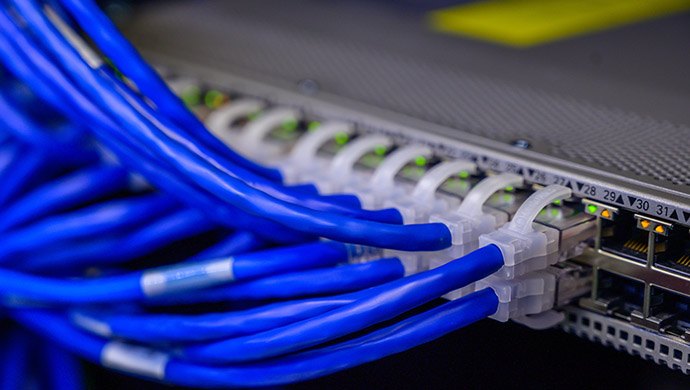In recent weeks, there have been numerous reports of Iran’s internet speed dropping dramatically, causing major hurdles in the daily lives of millions of Iranians. The regime’s Minister of Information and Communications Technology dismissed the issue as an infrastructural problem inherited from the previous administration.
But technology analysts and even some state-run media are suggesting that the declining internet speed is a deliberate throttling being carried out as the silent execution of the “Cyberspace Users Rights Protection” plan, an internet censorship bill that has been making the rounds in the past months.
More proof of the regime’s intentions to further restrict access to internet services came yesterday as news broke that a subcommittee of the Majlis (parliament) approved the bill and is considering delivering it to the executive branch for full implementation.
The Cyberspace Users Rights Protection bill
Iran’s regime already imposes severe restrictions on social media and messaging platforms, news websites, and other online applications. But a draft of the Cyberspace Users Rights Protection bill, will impose even more limits on Iranian users’ access to internet services under the pretext of “managing domestic and foreign traffic.”
The regime will predicate the activity of any internet service in Iran to compliance with the rules set by the Supreme Council of Cyberspace, the government body that supervises and implements internet censorship. With most popular messaging platforms using strong encryption to protect user data in transition, the regime is having difficulty spying on users and tracking protesters and opposition activists. The bill empowers the regime to compel foreign social media companies to surrender user data to regime authorities, transfer servers inside Iran, or allow the regime to use other methods to unencrypt and monitor user communications.
At the same time, the regime is leading initiatives to replace popular social media with “native” applications that are developed and hosted inside Iran, giving it full access to user data. This includes messaging apps like the Soroush messenger and the Bazaar app store. The bill requires smartphone manufacturers to have these applications pre-installed or else they will be subject to increased customs fees.
The bill also tasks the communication ministry to block all virtual private networks (VPN) and other censorship-circumvention tools and stipulates jail and financial punishments for users who use these tools.
The bill classifies internet gateways as the equivalent of land and sea borders and puts them under the full authority of the government bodies. This will give the judiciary free reins to peer into user communications without needing any warrants or legal procedures.
The regime terrified of free internet access
The increased interest in restricting internet access comes as the regime is extremely worried about the role of messaging and social media platforms in helping protesters and dissidents communicate and organize. During the November 2019 protests, millions of texts, images, and video reports sent on social media kept the world informed about Iran’s biggest uprising in the past four decades.
In a recent speech, regime supreme leader Ali Khamenei complained about the “unregulated state” of the internet and called for more restrictions on the free flow of information in and out of Iran. The main goal here is to pave the way for cracking down on protests and stopping the growing influence of the Iranian opposition.
The regime banned access to major social media platforms, including Facebook, YouTube, and Twitter, after the 2009 nationwide protests. Since then, however, many other platforms have found their way into the hands of Iranian users. Instagram and Telegram are among the most popular applications in Iran. And even though the regime banned Telegram in recent years, millions of Iranians continue to use it every day.
Major hurdles loom
Nevertheless, the regime’s plan for complete internet censorship faces several major hurdles, which has caused divisions among the regime’s own officials and factions.
First, the foreign social media and messaging platforms the regime is trying to regulate are hosted in countries where digital privacy is among the fundamental rights of every citizen. And while tech companies sometimes go out of their way and disregard their core values for the sake of financial interest, the Iranian market offers no such incentives: It is plagued with corruption, instability, and the looming shadow of international sanctions due to the regime’s belligerent activities, money laundering practices, and the nuclear standoff.
Second, the regime’s plans to replace foreign services with domestic applications do not have a solid foundation. Given Iran’s poor digital infrastructure and the extremely high usage of internet services among Iranians, the regime will not be able to roll out and maintain such apps at the scale of tens of millions of users. Even the regime’s own experts are questioning the plausibility of efforts aimed at replacing major applications with Iran-native applications.
And third, online platforms have become indispensable to Iran’s economic activities. Millions of users rely on messaging apps for their businesses. Blocking access to online services will hit Iran’s economy extremely hard. For example, during the 2019 protests, the regime carried out a complete shutdown of the internet for several weeks, causing billions of dollars in damage to the economy. Even in recent days, as the regime has been experimenting with throttling internet access, many businesses have been disrupted. At present, Iran’s economy is on the verge of total collapse. Every day, people from different walks of life are coming to the streets to protest inflation, high prices, unemployment, and other economic problems. An overhaul of internet access will further aggravate economic woes, triggering more of the same protests that the regime is trying to prevent.
At this point, the mullahs are caught in a web of conflicting dilemmas, each of which will further nudge it toward another major confrontation with the Iranian people and their resistance movement.





